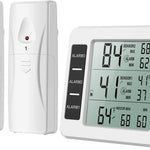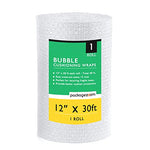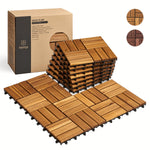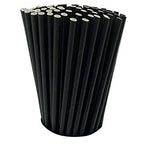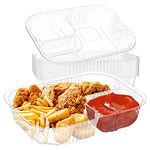You have no items in your shopping cart.
As the saying goes, "We are what we eat." Food plays a vital role in our lives, and ensuring its safety and hygiene is of utmost importance. One crucial aspect of maintaining food safety is the proper use of food handling gloves. In this comprehensive guide, we will delve into the world of these gloves, understanding their significance, the various types available, the dos and don'ts, and how to choose the right gloves for different applications.
Food Handling Gloves: What Are They?
Food handling gloves are specialized protective gear designed to maintain food safety and hygiene during preparation, handling, and serving processes. They act as a barrier between the hands and food products, preventing cross-contamination and the spread of harmful bacteria, pathogens, and other contaminants.
The Importance of Food Handling Gloves
Foodborne illnesses can have severe consequences, affecting individuals and even large populations. Food handling gloves play a crucial role in preventing such outbreaks and ensuring that the food served is safe for consumption. Here's why they are essential:
-
Preventing Cross-Contamination: Cross-contamination is a major concern in the food industry. Gloves act as a protective layer, minimizing the transfer of bacteria from hands to food and vice versa.
-
Maintaining Hygiene Standards: Gloves provide an extra level of protection and contribute to maintaining high hygiene standards in food establishments.
-
Protecting Consumers: By using food handling gloves, food service workers safeguard the health and well-being of their customers.
-
Complying with Regulations: Many health departments and regulatory bodies mandate the use of gloves in food handling environments.
Types of Food Handling Gloves
There are various types of food handling gloves available, each with its unique features and suitable for specific applications:
-
Latex Gloves: Latex gloves are widely used in the food industry due to their excellent flexibility and sensitivity. They offer a snug fit and are suitable for tasks that require precision.
-
Nitrile Gloves: Nitrile gloves are a popular alternative to latex gloves, especially for those with latex allergies. They are resistant to punctures and provide good chemical resistance.
-
Vinyl Gloves: Vinyl gloves are an economical option, but they offer less durability and are better suited for low-risk food handling tasks.
-
Polyethylene Gloves: These lightweight gloves are often used for short-duration tasks such as sandwich making or handling ready-to-eat foods.
-
Cut-Resistant Gloves: Designed to protect against sharp tools or utensils, these gloves are essential in kitchens where cutting and chopping are frequent tasks.
Choosing the Right Food Handling Gloves
Selecting the appropriate food handling gloves is crucial for maintaining safety and efficiency. Consider the following factors while making your choice:
-
Material Compatibility: Ensure that the gloves you choose are suitable for the specific types of food you handle.
-
Size and Fit: Gloves that are too tight or too loose can compromise their effectiveness. Select gloves that fit comfortably and securely.
-
Allergies: Take into account any allergies that staff or customers may have, and opt for latex-free gloves if needed.
-
Task Specificity: Different tasks may require different types of gloves. For instance, handling raw meat might require a more robust glove than serving salads.
-
Durability: Balance cost considerations with the durability needed for the tasks at hand.
Proper Usage and Best Practices
To maximize the benefits of food handling gloves, it's essential to use them correctly and follow best practices:
-
Wash Hands Thoroughly: Always wash hands before donning gloves to reduce the risk of contamination.
-
Change Gloves Regularly: Gloves should be changed between different tasks or when moving from handling raw to cooked food.
-
Avoid Touching Non-Food Surfaces: Minimize touching surfaces other than the food being handled.
-
Inspect Gloves for Damage: Check for any tears or punctures before using gloves.
-
Never Reuse Disposable Gloves: Single-use gloves should never be reused.
FAQs about Food Handling Gloves
Q: Are all food handling gloves disposable?
A: No, while many gloves are disposable, there are also reusable options available. The choice depends on the specific needs and tasks involved.
Q: Can I use the same gloves for different food items?
A: It is best to use separate gloves for different food items to avoid cross-contamination.
Q: How often should gloves be changed?
A: Gloves should be changed whenever they become soiled or torn, or when moving between different tasks or food types.
Q: Can I use latex gloves if I have a latex allergy?
A: If you have a latex allergy, it is recommended to use latex-free alternatives like nitrile or vinyl gloves.
Q: Are food handling gloves necessary for home cooking?
A: While not mandatory, using food handling gloves at home can enhance food safety and hygiene, especially when handling raw meat or allergens.
Q: Are there gloves specifically designed for handling hot food?
A: Yes, there are heat-resistant gloves designed for handling hot food items, providing protection against burns.
Conclusion
Food handling gloves are indispensable tools in ensuring the safety and hygiene of the food we consume. By providing a protective barrier and minimizing cross-contamination, these gloves play a vital role in safeguarding public health. Whether in commercial kitchens, food processing units, or even at home, their proper usage is crucial for maintaining high-quality standards. Always remember to choose the right type of gloves, follow best practices, and prioritize food safety to create a healthier and happier dining experience for all.


